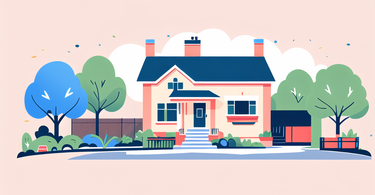Introduction to Fencing Materials
Understanding Cedar and Composite Fencing
Cedar and composite are popular fencing materials in American yards. Cedar is a natural wood known for its beauty and durability. It has a warm, classic look that many homeowners love. Composite fencing, on the other hand, is made from a mix of wood fibers and plastic. It offers a modern alternative to traditional wood fences. Both materials have unique features that suit different needs and preferences.

Cedar fences have a natural resistance to decay and insects. They can last for many years with proper care. Composite fences are engineered to resist rot, warping, and fading. They require less maintenance than wood fences. Understanding these basic differences can help you choose the right fence for your yard.
Advantages of Cedar and Composite Fencing in the U.S.
Cedar fencing has several advantages for American homeowners. It's naturally beautiful and ages well over time. Cedar is also eco-friendly and renewable. It's easy to work with, making installation simpler. The wood's natural oils help it resist moisture and pests. This can be especially useful in areas with high humidity or insect activity.
Composite fencing offers its own set of benefits. It's highly durable and can withstand harsh weather conditions. This makes it ideal for areas with extreme temperatures or frequent storms. Composite fences don't need painting or staining. They come in a variety of colors and styles to match any home design. The material is also splinter-free, making it safer for families with children and pets.
Comparing Cedar and Composite Fencing: Durability and Performance
Cedar Fencing: Longevity and Maintenance
Cedar fences can last 15 to 30 years with proper care. The wood's natural oils make it resistant to decay and insect damage. However, cedar does require regular maintenance to keep it looking its best. This includes annual cleaning and occasional staining or sealing. Without proper care, cedar can fade to a grayish color over time.

To maintain a cedar fence:
- Clean it annually with a mild soap and water solution
- Apply a water-repellent sealer every few years
- Check for and replace any damaged boards
- Trim nearby plants to prevent moisture buildup
With these steps, a cedar fence can remain beautiful and functional for decades.
Composite Fencing: Sustainability and Design Variety
Composite fencing is known for its durability and low maintenance needs. It can last 20 to 30 years or more without significant upkeep. The material resists fading, warping, and cracking. This makes it ideal for areas with harsh weather conditions. Composite fences don't need painting or staining, saving time and money over the years.
One of the biggest advantages of composite fencing is its design variety. It comes in many colors and styles, including:
- Wood grain textures that mimic real wood
- Solid colors for a modern look
- Various panel designs and post cap options
- Mix-and-match capabilities for unique fence designs
This variety allows homeowners to create a fence that perfectly complements their home and landscape.
Environmental Impact: Cedar vs. Composite Fencing
When considering environmental impact, both cedar and composite fencing have pros and cons. Cedar is a renewable resource that's biodegradable. It has a lower carbon footprint in production compared to composite materials. However, the need for regular treatments with chemicals can offset some of its eco-friendly benefits.
Composite fencing often contains recycled materials, which is good for the environment. It doesn't require chemical treatments and lasts a long time. This reduces the need for replacement and conserves resources. However, composite materials are not biodegradable and can be harder to recycle at the end of their life.
Both options have environmental merits. The best choice depends on personal values and local environmental concerns.
Installation and Cost Considerations
Factors Influencing the Cost of Cedar and Composite Fencing
The cost of fencing varies based on several factors. For cedar fencing, the grade of wood affects the price. Higher grades are more expensive but offer better quality. The height and length of the fence also impact cost. Labor costs can vary depending on the complexity of the installation.

Composite fencing is generally more expensive upfront than cedar. However, it may save money in the long run due to lower maintenance costs. Factors affecting composite fence costs include:
- Brand and quality of materials
- Style and design chosen
- Height and length of the fence
- Any additional features like post caps or lighting
Both types of fencing may have additional costs for site preparation or removal of old fencing.
The Installation Process: Comparing the Two Fencing Types
Installing a cedar fence typically involves these steps:
- Setting posts in concrete
- Attaching horizontal rails to the posts
- Nailing or screwing cedar boards to the rails
- Adding any finishing touches like post caps
Cedar is relatively easy to work with, making DIY installation possible for skilled homeowners.
Composite fence installation is similar, but with some differences:
- Posts are set in concrete, often with special brackets
- Horizontal rails are attached, usually with specific hardware
- Composite panels or boards are installed according to manufacturer instructions
- Special end caps or trim pieces are added for a finished look
Composite fencing often requires specific tools and techniques. Professional installation is recommended for best results.
Homeowner Tips: Maintaining Your Fence Investment
Proper maintenance is key to getting the most value from your fence. For cedar fences:
- Inspect regularly for damage or loose boards
- Clean annually with a soft brush and mild detergent
- Apply a water-repellent sealer every 2-3 years
- Trim nearby vegetation to prevent moisture buildup
Composite fence maintenance is simpler:
- Rinse with a garden hose to remove dirt and debris
- Use soap and water for tougher stains
- Avoid using abrasive cleaners or power washers
- Check for loose hardware and tighten as needed
By following these tips, homeowners can ensure their fence remains attractive and functional for years to come.
